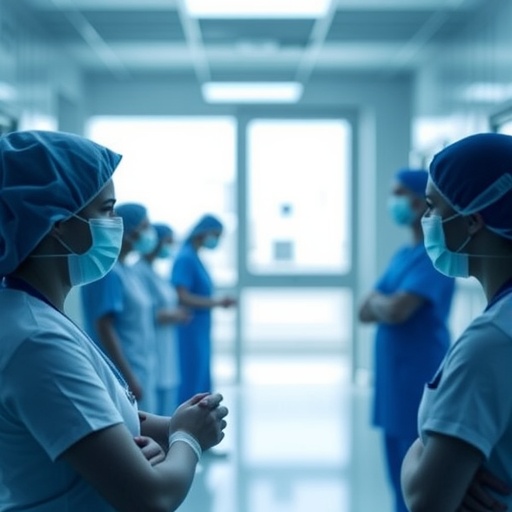Bethesda, Md. (May 31, 2018)–New research suggests that changes in the eye that occur during spaceflight may be related to how much an astronaut weighs. The study is published ahead of print in the American Journal of Physiology–Regulatory, Integrative and Comparative Physiology.
Reduced gravity levels (microgravity) in space can lead to spaceflight-associated neuro-ocular syndrome (SANS) in some astronauts. SANS refers to structural changes in the eye that may impair vision, including swelling of the optic nerve (optic disc edema) and colored indentations (choroidal folds) in the blood vessel network at the back of the eye. Researchers now think that how much a person weighs may play a role in these ocular changes.
On Earth, the weight of the body's tissues presses against other bodily structures (e.g., bones, muscles, organs, veins) creating compressive forces, which can affect pressures in blood vessels and in organs throughout the body. These compressive forces increase as body weight increases. In microgravity, body tissue is weightless, so compressive forces against the rest of the body are absent. People with more body tissue–and therefore a higher body weight–are proportionately more likely to experience physiological changes in a low-gravity environment because they experience a greater change in these compressive forces, the researchers hypothesized.
The research team examined data collected by NASA from astronauts who had made long-duration space flights (averaging 165 days). The data included the astronauts' sex and pre-flight height, weight, waist and chest size, as well as information about post-flight eye changes. The findings were related to body weight, not body mass index. They found that none of the female astronauts analyzed–who weighed less than the males–returned to Earth with symptoms of SANS. To rule out sex differences as a cause for the disparity, the researchers also examined the men's data separately. "Pre-flight weight, waist circumference and chest circumference were all significantly greater in those who developed either disc edema or choroidal folds. This was still true when only the male cohort was analyzed," the researchers wrote. "The results from this study show a strong relationship between body weight and the development of ocular changes in space."
###
Read the full article, "Microgravity-induced ocular changes are related to body weight," published ahead of print in the American Journal of Physiology–Regulatory, Integrative and Comparative Physiology.
NOTE TO JOURNALISTS: To schedule an interview with a member of the research team, please contact the [email protected] Communications Office or 301-634-7209. Find more research highlights in the APS Press Room.
Physiology is the study of how molecules, cells, tissues and organs function in health and disease. Established in 1887, the American Physiological Society (APS) was the first U.S. society in the biomedical sciences field. The Society represents more than 10,500 members and publishes 15 peer-reviewed journals with a worldwide readership.
Media Contact
Stacy Brooks
[email protected]
301-634-7209
@APSPhysiology
http://www.the-aps.org
http://dx.doi.org/10.1152/ajpregu.00086.2018




